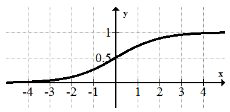1.6: 1.6 Symmetry
- Page ID
- 954
\( \newcommand{\vecs}[1]{\overset { \scriptstyle \rightharpoonup} {\mathbf{#1}} } \)
\( \newcommand{\vecd}[1]{\overset{-\!-\!\rightharpoonup}{\vphantom{a}\smash {#1}}} \)
\( \newcommand{\dsum}{\displaystyle\sum\limits} \)
\( \newcommand{\dint}{\displaystyle\int\limits} \)
\( \newcommand{\dlim}{\displaystyle\lim\limits} \)
\( \newcommand{\id}{\mathrm{id}}\) \( \newcommand{\Span}{\mathrm{span}}\)
( \newcommand{\kernel}{\mathrm{null}\,}\) \( \newcommand{\range}{\mathrm{range}\,}\)
\( \newcommand{\RealPart}{\mathrm{Re}}\) \( \newcommand{\ImaginaryPart}{\mathrm{Im}}\)
\( \newcommand{\Argument}{\mathrm{Arg}}\) \( \newcommand{\norm}[1]{\| #1 \|}\)
\( \newcommand{\inner}[2]{\langle #1, #2 \rangle}\)
\( \newcommand{\Span}{\mathrm{span}}\)
\( \newcommand{\id}{\mathrm{id}}\)
\( \newcommand{\Span}{\mathrm{span}}\)
\( \newcommand{\kernel}{\mathrm{null}\,}\)
\( \newcommand{\range}{\mathrm{range}\,}\)
\( \newcommand{\RealPart}{\mathrm{Re}}\)
\( \newcommand{\ImaginaryPart}{\mathrm{Im}}\)
\( \newcommand{\Argument}{\mathrm{Arg}}\)
\( \newcommand{\norm}[1]{\| #1 \|}\)
\( \newcommand{\inner}[2]{\langle #1, #2 \rangle}\)
\( \newcommand{\Span}{\mathrm{span}}\) \( \newcommand{\AA}{\unicode[.8,0]{x212B}}\)
\( \newcommand{\vectorA}[1]{\vec{#1}} % arrow\)
\( \newcommand{\vectorAt}[1]{\vec{\text{#1}}} % arrow\)
\( \newcommand{\vectorB}[1]{\overset { \scriptstyle \rightharpoonup} {\mathbf{#1}} } \)
\( \newcommand{\vectorC}[1]{\textbf{#1}} \)
\( \newcommand{\vectorD}[1]{\overrightarrow{#1}} \)
\( \newcommand{\vectorDt}[1]{\overrightarrow{\text{#1}}} \)
\( \newcommand{\vectE}[1]{\overset{-\!-\!\rightharpoonup}{\vphantom{a}\smash{\mathbf {#1}}}} \)
\( \newcommand{\vecs}[1]{\overset { \scriptstyle \rightharpoonup} {\mathbf{#1}} } \)
\( \newcommand{\vecd}[1]{\overset{-\!-\!\rightharpoonup}{\vphantom{a}\smash {#1}}} \)
\(\newcommand{\avec}{\mathbf a}\) \(\newcommand{\bvec}{\mathbf b}\) \(\newcommand{\cvec}{\mathbf c}\) \(\newcommand{\dvec}{\mathbf d}\) \(\newcommand{\dtil}{\widetilde{\mathbf d}}\) \(\newcommand{\evec}{\mathbf e}\) \(\newcommand{\fvec}{\mathbf f}\) \(\newcommand{\nvec}{\mathbf n}\) \(\newcommand{\pvec}{\mathbf p}\) \(\newcommand{\qvec}{\mathbf q}\) \(\newcommand{\svec}{\mathbf s}\) \(\newcommand{\tvec}{\mathbf t}\) \(\newcommand{\uvec}{\mathbf u}\) \(\newcommand{\vvec}{\mathbf v}\) \(\newcommand{\wvec}{\mathbf w}\) \(\newcommand{\xvec}{\mathbf x}\) \(\newcommand{\yvec}{\mathbf y}\) \(\newcommand{\zvec}{\mathbf z}\) \(\newcommand{\rvec}{\mathbf r}\) \(\newcommand{\mvec}{\mathbf m}\) \(\newcommand{\zerovec}{\mathbf 0}\) \(\newcommand{\onevec}{\mathbf 1}\) \(\newcommand{\real}{\mathbb R}\) \(\newcommand{\twovec}[2]{\left[\begin{array}{r}#1 \\ #2 \end{array}\right]}\) \(\newcommand{\ctwovec}[2]{\left[\begin{array}{c}#1 \\ #2 \end{array}\right]}\) \(\newcommand{\threevec}[3]{\left[\begin{array}{r}#1 \\ #2 \\ #3 \end{array}\right]}\) \(\newcommand{\cthreevec}[3]{\left[\begin{array}{c}#1 \\ #2 \\ #3 \end{array}\right]}\) \(\newcommand{\fourvec}[4]{\left[\begin{array}{r}#1 \\ #2 \\ #3 \\ #4 \end{array}\right]}\) \(\newcommand{\cfourvec}[4]{\left[\begin{array}{c}#1 \\ #2 \\ #3 \\ #4 \end{array}\right]}\) \(\newcommand{\fivevec}[5]{\left[\begin{array}{r}#1 \\ #2 \\ #3 \\ #4 \\ #5 \\ \end{array}\right]}\) \(\newcommand{\cfivevec}[5]{\left[\begin{array}{c}#1 \\ #2 \\ #3 \\ #4 \\ #5 \\ \end{array}\right]}\) \(\newcommand{\mattwo}[4]{\left[\begin{array}{rr}#1 \amp #2 \\ #3 \amp #4 \\ \end{array}\right]}\) \(\newcommand{\laspan}[1]{\text{Span}\{#1\}}\) \(\newcommand{\bcal}{\cal B}\) \(\newcommand{\ccal}{\cal C}\) \(\newcommand{\scal}{\cal S}\) \(\newcommand{\wcal}{\cal W}\) \(\newcommand{\ecal}{\cal E}\) \(\newcommand{\coords}[2]{\left\{#1\right\}_{#2}}\) \(\newcommand{\gray}[1]{\color{gray}{#1}}\) \(\newcommand{\lgray}[1]{\color{lightgray}{#1}}\) \(\newcommand{\rank}{\operatorname{rank}}\) \(\newcommand{\row}{\text{Row}}\) \(\newcommand{\col}{\text{Col}}\) \(\renewcommand{\row}{\text{Row}}\) \(\newcommand{\nul}{\text{Nul}}\) \(\newcommand{\var}{\text{Var}}\) \(\newcommand{\corr}{\text{corr}}\) \(\newcommand{\len}[1]{\left|#1\right|}\) \(\newcommand{\bbar}{\overline{\bvec}}\) \(\newcommand{\bhat}{\widehat{\bvec}}\) \(\newcommand{\bperp}{\bvec^\perp}\) \(\newcommand{\xhat}{\widehat{\xvec}}\) \(\newcommand{\vhat}{\widehat{\vvec}}\) \(\newcommand{\uhat}{\widehat{\uvec}}\) \(\newcommand{\what}{\widehat{\wvec}}\) \(\newcommand{\Sighat}{\widehat{\Sigma}}\) \(\newcommand{\lt}{<}\) \(\newcommand{\gt}{>}\) \(\newcommand{\amp}{&}\) \(\definecolor{fillinmathshade}{gray}{0.9}\)Some functions, like the sine function, the absolute value function and the squaring function, have reflection symmetry across the line \(x=0\). Other functions like the cubing function and the reciprocal function have rotational symmetry about the origin.
Why is the first group categorized as even functions while the second group is categorized as odd functions?
Even and Odd Functions
Even Functions
Functions symmetrical across the line \(x=0\) (the \(y\) axis) are called even. Even functions have the property that when a negative value is substituted for \(x\), it produces the same value as when the positive value is substituted for the \(x\). In other words, the equation \(f(-x)=f(x)\) holds true for even functions.
To show that the function \(f(x)=3 x^{4}-5 x^{2}+1\) is even, show that \(f(-x)=f(x)\).
\(\begin{aligned} f(-x) &=3(-x)^{4}-5(-x)^{2}+1 \\ &=3 x^{4}-5 x^{2}+1 \\ &=f(x) \end{aligned}\)
The property that both positive and negative numbers raised to an even power are always positive is the reason why the term even is used. It does not matter that the coefficients are even or odd, just the exponents.
Odd Functions
Functions that have rotational symmetry about the origin are called odd functions. Odd functions have the property that when a negative \(x\) value is substituted into the function, it produces a negative version of the function evaluated at a positive value. In other words, the equation \(f(-x)=-f(x)\) holds true for odd functions.
This property becomes increasingly important in problems and proofs of Calculus and beyond, but for now it is sufficient to identify functions that are even, odd or neither and show why.
To show that \(f(x)=4 x^{3}-x\) is odd, show that \(f(-x)=-f(x)\).
\(\begin{aligned} f(-x) &=4(-x)^{3}-x \\ &=-4 x^{3}+x \\ &=-\left(4 x^{3}+x\right) \\ &=-f(x) \end{aligned}\)
Just like even functions are named, odd functions are named because negative signs don’t disappear and can always be factored out of odd functions.
Even and odd functions describe different types of symmetry, but both derive their name from the properties of exponents. A negative number raised to an even number will always be positive. A negative number raised to an odd number will always be negative.
Examples
Which of the basic functions are even, which are odd and which are neither?
Even Functions: The squaring function and the absolute value function.
Odd Functions: The identity function, the cubing function, the reciprocal function, the sine function.
Neither: The square root function, the exponential function and the log function. The logistic function is also neither because it is rotationally symmetric about the point \(\left(0, \frac{1}{2}\right)\) as opposed to the origin.

Suppose \(h(x)\) is an even function and \(g(x)\) is an odd function. \(f(x)=h(x)+g(x) .\) Is \(f(x)\) even or odd? If \(h(x)\) is even then \(h(-x)=h(x)\). If \(g(x)\) is odd then \(g(-x)=-g(x)\)
Therefore: \(f(-x)=h(-x)+g(-x)=h(x)-g(x)\)
This does not match \(f(x)=h(x)+g(x)\) nor does it match \(-f(x)=-h(x)-g(x)\)
This is a proof that shows the sum of an even function and an odd function will never itself be even or odd.
Determine whether the following function is even, odd, or neither.
\(f(x)=x\left(x^{2}-1\right)\left(x^{4}+1\right)\)
Identify whether the function is even, odd or neither and explain why.
\(\begin{aligned} f(x) &=x\left(x^{2}-1\right)\left(x^{4}+1\right) \\ f(-x) &=(-x)\left((-x)^{2}-1\right)\left((-x)^{4}+1\right) \\ &=-x\left(x^{2}-1\right)\left(x^{4}+1\right) \\ &=-f(x) \end{aligned}\)
The function is odd because \(f(-x)=-f(x)\) holds true.
\(f(x)=4 x^{3}-|x|\)]
\(\begin{aligned} f(-x) &=4(-x)^{3}-x \\ &=-4 x^{3}-x \end{aligned}\)
This does not seem to match either \(f(x)=4 x^{3}-|x|\) or \(-f(x)=-4 x^{3}+|x| .\) Therefore, this function is neither even nor odd.
Note: This function is a difference of an odd function and an even function. This should be a clue that the resulting function is neither even nor odd.
Review
Determine whether the following functions are even, odd, or neither.
1. \(f(x)=-4 x^{2}+1\)
2. \(g(x)=5 x^{3}-3 x\)
3. \(h(x)=2 x^{2}-x\)
4. \(j(x)=(x-4)(x-3)^{3}\)
5. \(k(x)=x\left(x^{2}-1\right)^{2}\)
6. \(f(x)=2 x^{3}-5 x^{2}-2 x+1\)
7. \(g(x)=2 x^{2}-4 x+2\)
8. \(h(x)=-5 x^{4}+x^{2}+2\)
9. Suppose \(h(x)\) is even and \(g(x)\) is odd. Show that \(f(x)=h(x)-g(x)\) is
neither even nor odd.
10. Suppose \(h(x)\) is even and \(g(x)\) is odd. Show that \(f(x)=\frac{h(x)}{g(x)}\) is odd.
11. Suppose \(h(x)\) is even and \(g(x)\) is odd. Show that \(f(x)=h(x) \cdot g(x)\) is odd.
12. Is the sum of two even functions always an even function? Explain.
13. Is the sum of two odd functions always an odd function? Explain.
14. Why are some functions neither even nor odd?
15. If you know that a function is even or odd, what does that tell you about the symmetry of the function?

